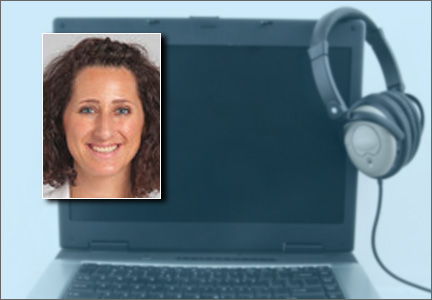User login
Care of the transgender patient: What is the gynecologist's role?
Although precise data are unavailable, it was estimated in 2011 that there were nearly 700,000 transgendered persons in the United States.1 This means that gynecologists in certain locales regularly encounter transgender patients in clinical practice.
At the 2015 Annual Clinical Meeting of the American College of Obstetricians and Gynecologists (ACOG), held May 2-6 in San Francisco, California, Dr. Cecile A. Unger discussed the role of the gynecologist in the care of transgender patients.
In this interview with OBG Management, Dr. Unger discusses:
- pertinent terminology, including gender dysphoria, and important clinical aspects of examining and treating a transgender patient
- what a clinician be screening for in general, as well as specifically, in the transgender population, including considerations for when a patient is undergoing hormone therapy
- the importance of developing trust and how that can be accomplished.
Reference
- Gates GJ. How many people are lesbian, gay, bisexual, and transgender? The Williams Institute Web site. http://williamsinstitute.law.ucla.edu/wp-content/uploads/Gates-How-Many-People-LGBT-Apr-2011.pdf. Published April 2011. Accessed May 5, 2015.
Although precise data are unavailable, it was estimated in 2011 that there were nearly 700,000 transgendered persons in the United States.1 This means that gynecologists in certain locales regularly encounter transgender patients in clinical practice.
At the 2015 Annual Clinical Meeting of the American College of Obstetricians and Gynecologists (ACOG), held May 2-6 in San Francisco, California, Dr. Cecile A. Unger discussed the role of the gynecologist in the care of transgender patients.
In this interview with OBG Management, Dr. Unger discusses:
- pertinent terminology, including gender dysphoria, and important clinical aspects of examining and treating a transgender patient
- what a clinician be screening for in general, as well as specifically, in the transgender population, including considerations for when a patient is undergoing hormone therapy
- the importance of developing trust and how that can be accomplished.
Although precise data are unavailable, it was estimated in 2011 that there were nearly 700,000 transgendered persons in the United States.1 This means that gynecologists in certain locales regularly encounter transgender patients in clinical practice.
At the 2015 Annual Clinical Meeting of the American College of Obstetricians and Gynecologists (ACOG), held May 2-6 in San Francisco, California, Dr. Cecile A. Unger discussed the role of the gynecologist in the care of transgender patients.
In this interview with OBG Management, Dr. Unger discusses:
- pertinent terminology, including gender dysphoria, and important clinical aspects of examining and treating a transgender patient
- what a clinician be screening for in general, as well as specifically, in the transgender population, including considerations for when a patient is undergoing hormone therapy
- the importance of developing trust and how that can be accomplished.
Reference
- Gates GJ. How many people are lesbian, gay, bisexual, and transgender? The Williams Institute Web site. http://williamsinstitute.law.ucla.edu/wp-content/uploads/Gates-How-Many-People-LGBT-Apr-2011.pdf. Published April 2011. Accessed May 5, 2015.
Reference
- Gates GJ. How many people are lesbian, gay, bisexual, and transgender? The Williams Institute Web site. http://williamsinstitute.law.ucla.edu/wp-content/uploads/Gates-How-Many-People-LGBT-Apr-2011.pdf. Published April 2011. Accessed May 5, 2015.

